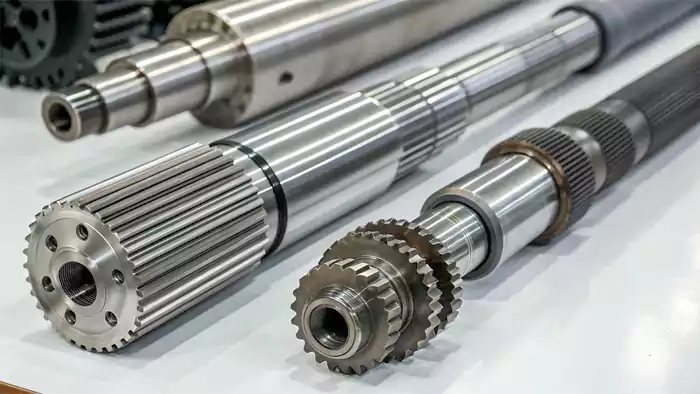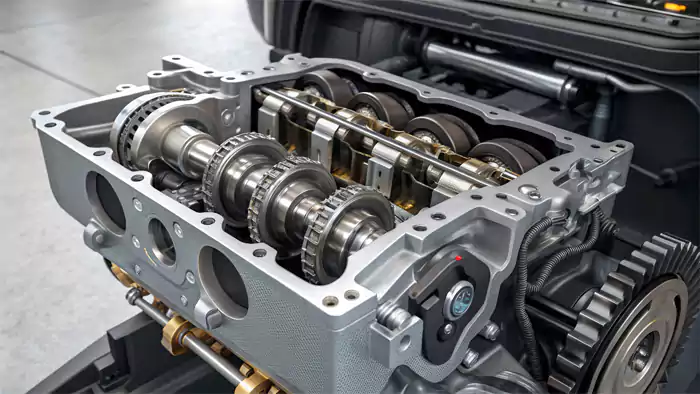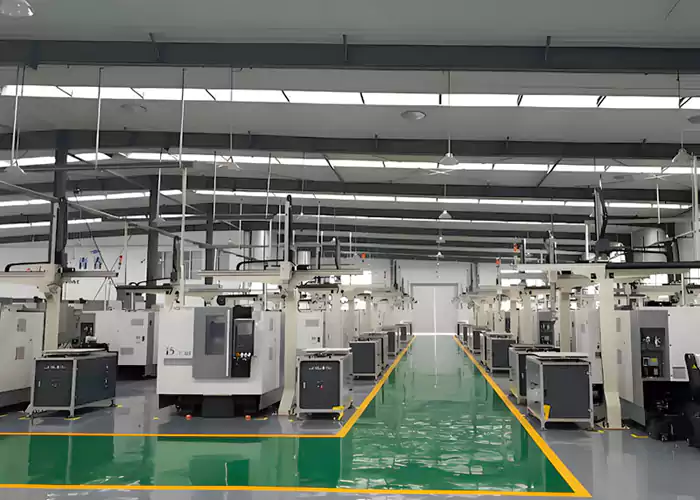Struggling with machine performance or unexpected breakdowns? Often, the hidden cause is poor power transfer, stemming directly from the motor shaft. Understanding this key component is vital for ensuring reliability.
A motor shaft is the rotating part of a motor that converts electrical energy into mechanical power, transmitting torque and rotational motion to drive connected machines or systems.
It might seem straightforward, but the precision and design of a motor shaft are crucial. I've personally seen projects face significant delays and budget overruns simply because the shaft wasn't correctly specified or manufactured. Getting this part right prevents a lot of headaches down the line. Let's dig into what makes these components tick.
What exactly are motor shafts, and what types exist?
Need a shaft for a specific application in your design? Just grabbing any standard shaft can lead to inefficient operation or even failure. Knowing the different types helps you select or design the perfect fit.
Motor shafts aren't monolithic; they come in various forms tailored to specific needs. Common types include drive shafts, transmission shafts, support shafts, spline shafts, and custom-designed shafts for unique applications.

Diving Deeper into Shaft Varieties
Understanding the different kinds of shafts helps ensure you're using the right tool for the job. Let's break down some common categories:
Basic Rotational Shafts
These are often simple, straight shafts designed primarily for transmitting rotation and torque1 in general machinery. Think of the shaft directly coming out of a standard electric motor. Their design focuses on strength and balance for smooth operation.
Transmission Shafts
These are designed to transfer power from a source, such as an engine or motor, to other parts of a system, often over a distance or through gearboxes. Automotive drive shafts are a classic example. They need to handle significant torque and often incorporate features like universal joints2 (U-joints) to accommodate angular misalignments. I remember a project involving an automated assembly line where we needed a very specific transmission shaft with integrated U-joints to navigate around existing equipment – getting that custom design right was key.
Specialized Function Shafts
Beyond simple rotation and power transmission, some shafts perform unique roles:
- Spline Shafts: These feature grooves or teeth along their surface that mesh with corresponding features on another component. This allows for excellent torque transfer and sometimes permits axial movement (sliding) while still transmitting power. They’re commonly found in gearboxes and power take-off (PTO) systems.
- Crankshafts & Camshafts: While often associated with internal combustion engines, similar concepts can apply in specialized motors or mechanisms. Crankshafts convert linear motion to rotational motion, while camshafts use lobes to actuate other parts (like valves) in precise timing. Their function is timing and actuation, rather than direct power transmission like a motor's output shaft.
- Hollow Shafts: These shafts have a hollow center. Why? Often to reduce weight without sacrificing too much torsional strength, or sometimes to allow fluids, wiring, or even other shafts to pass through the center.
Understanding these distinctions is crucial for customizing shaft components, especially when working with CNC machining service providers like Allied Metal. This ensures the final product fully meets functional requirements.What is the function of the shaft of a motor?
Your motor generates rotational force, that's clear. But how does that force actually get used? The shaft is the critical link that channels this power into useful work.
The primary function of a motor shaft is to convert the motor's electromagnetic energy into rotational mechanical energy and transmit the resulting torque (turning force) to the connected load.

Motor shaft function
More Than Just Spinning: The Shaft's Core Jobs
While transmitting torque is the main goal, a motor shaft performs several crucial functions simultaneously:
Transmitting Torque and Power
This is its fundamental purpose. The motor generates a turning force, and the shaft delivers3 this force to whatever needs to be driven – gears, pulleys, fans, wheels, etc. The shaft must be strong enough to handle the maximum expected torque4 without twisting excessively or breaking.
Supporting Rotating Components
The shaft often acts as the axis around which other components rotate. It needs to be straight and precisely dimensioned to ensure smooth, balanced rotation and prevent vibration. Any slight bend or imperfection can cause significant issues at high speeds. This is where precision CNC machining really makes all the difference. As someone like David, a Lead Mechanical Engineer, knows well, meeting tight tolerances isn't just desirable; it's often essential for performance.
Handling Loads
Motor shafts don't just experience torque; they often face other forces too:
- Radial Loads: Forces acting perpendicular to the shaft's axis, like the pull from a belt on a pulley.
- Axial Loads: Forces acting along the shaft's axis, like thrust from a propeller or helical gear.
The shaft material and design must withstand these combined loads over the expected operational life. Material selection (like high-strength steels or alloys) and treatments (like heat treatment for hardness) play a big role here.Ensuring Precision and Efficiency
The accuracy of the shaft's dimensions, surface finish, and balance directly affects the motor's efficiency and lifespan. A well-machined shaft minimizes friction, reduces vibration and noise, and ensures that the maximum amount of power is transferred effectively. I've seen firsthand how a poorly finished shaft can lead to premature bearing failure5 – a small detail with big consequences.
What is the shaft in an engine?
We often hear terms like "crankshaft" or "camshaft" when discussing engines. Are these fundamentally different from the shafts in electric motors? Let's clarify the connection and distinctions.
Engine shafts, such as crankshafts and camshafts, serve a similar purpose of transmitting motion and power. However, they are specifically designed for the unique environment and mechanics of internal combustion engines.

Shafts within an Engine
Engine Shafts vs. Motor Shafts: Key Differences
While both types of shafts transmit rotational power, their context and specific functions often differ:
Crankshafts: The Heart of Reciprocation
The most prominent shaft in many engines is the crankshaft. Its primary, specialized function is to convert the linear, up-and-down motion of the pistons into the rotational motion needed to drive the vehicle or equipment. This involves complex geometry with offset journals (lobes) where the connecting rods attach. This conversion process is unique to reciprocating engines6 and isn't typically found in standard electric motors, which inherently produce rotation.
Camshafts: Timing is Everything
Engines also rely on camshafts. These shafts don't usually transmit the main driving power. Instead, they have precisely shaped lobes (cams) that rotate to push open and allow the closing of engine valves at exact moments, controlling the flow of air/fuel mixture and exhaust gases. Their function is timing and actuation, rather than direct power transmission like a motor's output shaft.
Transmission Shafts in Powertrains
Connecting the engine (via the transmission/gearbox) to the wheels or final drive mechanism is often a transmission shaft or driveshaft. This shaft is very similar in function to a motor shaft in an electric vehicle's powertrain – Its job is simply to transfer rotational power from the power source (engine/gearbox or electric motor/gearbox) to the driven components.
Environment and Materials
Engine shafts operate in a harsh environment with high temperatures, combustion byproducts, and significant dynamic forces. They often require very specific alloys and manufacturing processes (like forging followed by precision machining) to withstand these conditions. While motor shafts also need durability, the operating environment is typically cleaner and involves different types of stresses (often more related to electromagnetic forces and continuous rotation).
So, while the basic principle of transmitting rotation holds true, engine shafts like crankshafts and camshafts have highly specialized designs dictated by the mechanics of internal combustion.
How do I get a high quality shaft?

Custom Machining at Allied Metal
If you're facing challenges sourcing shafts that meet specific tolerance requirements, material needs, or complex geometries like those we've discussed, remember that custom CNC machining is often the solution. At Allied Metal, we specialize in turning those detailed engineering drawings into high-quality, finished shafts ready for your application.
What is the purpose of a shaft?
We've focused on motors and engines, but shafts are everywhere in mechanical systems. So, if we take a step back, what’s the main purpose of any shaft? Why are they so fundamental?
The core purpose of any shaft in a mechanical system is to transmit torque and rotational motion between components, often connecting a power source to a driven element or linking different parts of a mechanism.

General Purpose of Shafts in Machinery
The Shaft: A Fundamental Mechanical Element
Shafts are one of the most basic and essential building blocks in machine design. Their purpose boils down to a few key roles:
Power Transmission Backbone
This is the most common purpose. Shafts act as the conduit for mechanical power, carrying rotational energy from where it's generated (like a motor, engine, or even a hand crank) to where it's needed (like wheels, gears, pumps, or cutting tools). Without shafts, efficiently moving power through a machine would be incredibly difficult.
Enabling Motion and Connection
Shafts define an axis of rotation. They allow components like gears, pulleys, wheels, and rotors to spin freely and predictably. They also serve to connect different parts of a machine that need to rotate together or in a synchronized way. Specialized shafts, like those with universal joints or flexible couplings, can even transmit rotation between components that aren't perfectly aligned. Sometimes, shafts like idler shafts are used simply to change the direction of motion (e.g., with belts or chains) without transmitting significant power.
Supporting Rotating Elements
Beyond just transmitting torque, shafts provide the physical support for rotating components. They carry the weight of gears, pulleys, or rotors and must withstand the associated radial and axial forces generated during operation. They work in conjunction with bearings, which allow the shaft itself to rotate smoothly while being held in place.
Facilitating Custom Solutions
Because shafts are so fundamental, they are often customized. Custom shaft manufacturing allows engineers like David to specify exact dimensions, materials (like specific steel alloys, aluminum, or titanium), features (splines, keyways, threads), and tolerances needed for unique applications, whether it's for industrial automation, aerospace, or robotics.
I recall a complex robotics project where we needed a series of interconnected, custom hollow shafts manufactured with extreme precision using CNC machining – a standard part just wouldn't have worked.
Essentially, shafts make rotational machinery possible. They are the simple, yet vital, components that tie everything together and make things move.
Conclusion
In short, motor shafts are key rotating components. They efficiently convert electrical energy into mechanical power, transferring torque to keep machines running smoothly. Getting the design and manufacturing right is crucial.
Footnotes:
- Exploring this topic will provide insights into the mechanics of machinery and improve your engineering knowledge. ↩
- Universal joints are essential for accommodating misalignments in mechanical systems. Discover their applications and benefits through this resource. ↩
- Learning about how shafts deliver force enhances knowledge of mechanical design and efficiency in machines. ↩
- Exploring maximum expected torque helps in designing reliable mechanical systems that can withstand operational stresses. ↩
- Exploring the causes of premature bearing failure can help prevent costly repairs and enhance machinery reliability. ↩
- Learn about reciprocating engines to appreciate their unique mechanics and applications in various vehicles. This resource will enhance your knowledge. ↩

Yo, wt777game, heard anything about it? If you’re trying to find something to get into, check it out and report back wt777game.